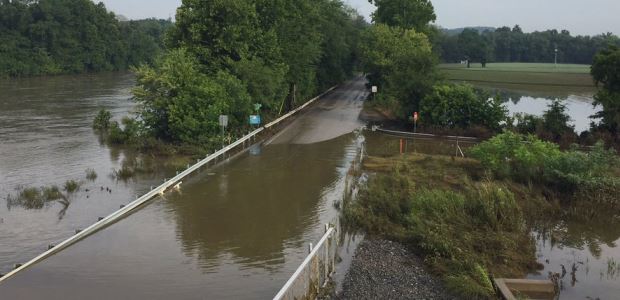
Pennsylvania DEP Promoting Governor's Infrastructure Plan
"Unexpected flood repairs can drain a municipality's budget. Restore Pennsylvania will provide financial relief to make necessary repairs and allow communities to return to normal," Pennsylvania Department of Environmental Protection Southcentral Regional Director Joe Adams said when he visited York County to talk with local leaders about the plan.
The Pennsylvania Department of Environmental Protection's Southcentral Regional director, Joe Adams, recently visited York County to talk with local leaders about how Gov. Tom Wolf's infrastructure plan, Restore Pennsylvania, would help communities dealing with the aftermath of flooding. Unprecedented rainfall last summer caused major flood damage in areas of Chanceford Township; six months later, seven township roads and bridges remain closed, and township officials are struggling with the costs of repairing their damaged infrastructure, according to DEP.
The road closures and bridge outages are dividing communities and detouring emergency personnel, but the estimated cost to repair them is more than five times what the township budgets for road repairs and maintenance, according to the agency.
"Municipalities can plan for rainy days, but extreme weather events can wash away even the best-laid plans in a matter of hours," Adams said. "Unexpected flood repairs can drain a municipality's budget. Restore Pennsylvania will provide financial relief to make necessary repairs and allow communities to return to normal."
Restore Pennsylvania calls for spending $4.5 billion during the next four years on projects across the state. Funding would come from a severance tax on natural gas production. The plan calls for ensuring high-speed Internet access to communities that currently lack it, helping towns and cities prepare for flooding and severe weather, creating a disaster relief trust fund to help people who suffer losses that are not compensated by FEMA or other programs, continuing Pennsylvania's brownfields cleanup program, offering resources to help communities acquire and demolish blighted buildings, funding new environmental projects, and supporting new capital projects at public transit agencies.